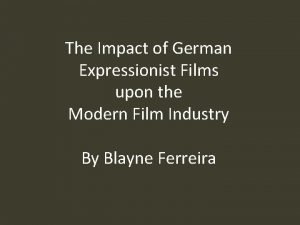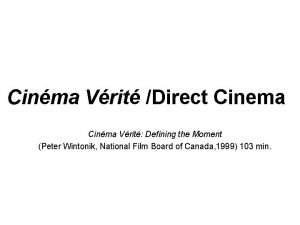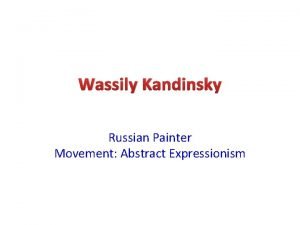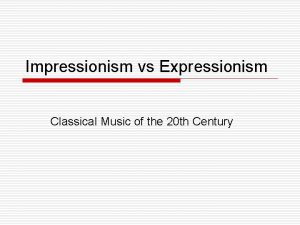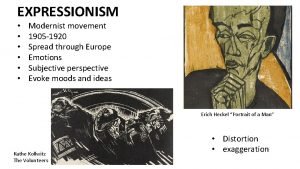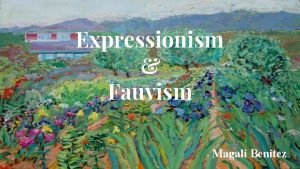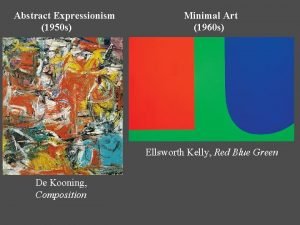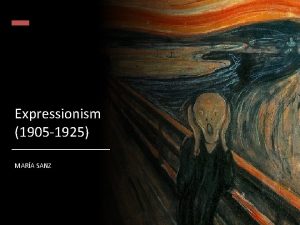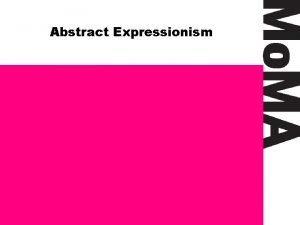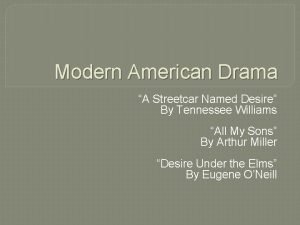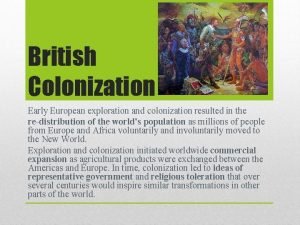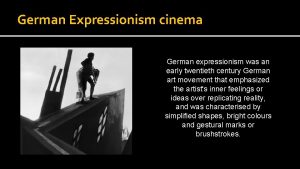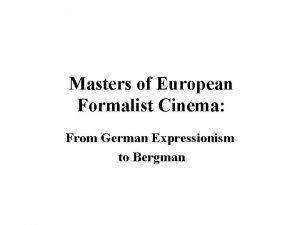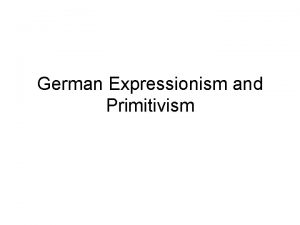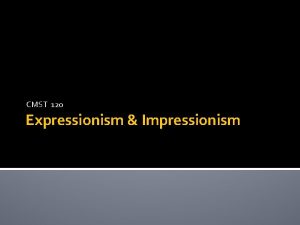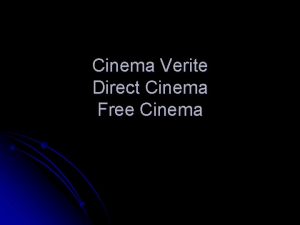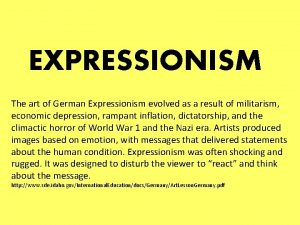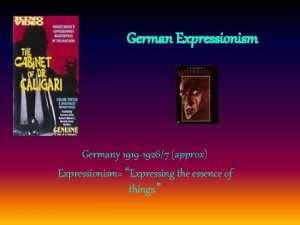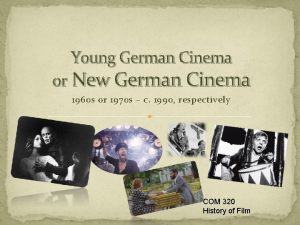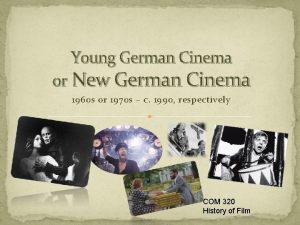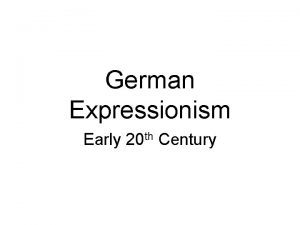Early European Formalist Cinema From German Expressionism to














- Slides: 14

Early European Formalist Cinema: From German Expressionism to Soviet Montage Film

Soviet Montage Film • Narkompros (People’s Commissariat for Education), an administration agency for education and culture, established a state film school, VGIK. • Lev Kuleshov had a workshop and experimented montage techniques with his students. • ‘Kureshov effect’

Montage Theory • The actor’s face assume the emotion following the intercut image – sadness after the image of a coffin, hunger after a bowl of soup, and lust after a sexy woman.


Montage Theory • MONTAGE THEORY • A photographic image of reality acquires a secondary value when it is juxtaposed by another image (editing –montage). • The second value is more important than the first in cinematic representation, therefore, time and space in cinema must be subordinate to the process of editing or montage. • Montage is an expressive process whereby dissimilar images could be linked together to create a symbolic third meaning.

Montage Theory • ‘Montage of Attractions’ – arbitrarily chosen images, independent of the action, would be presented in not a chronological sequence, but in whatever way would create the maximum psychological impact. • Sergei Eisenstein’s first article for Lef. • Choice is not arbitrary but images are chosen from the meaning implicit in an action.

Eisenstein & Montage Film • Sergei Eisenstein, the best practitioner and creator of montage film. His first feature film, Strike (1924) was conceived as an extended montage of shock stimuli. The massacre of strikers and their families in its conclusion is intercut with the shots of cattle being slaughtered. Strike

Eisenstein & Montage Film • Battleship Potemkin (1925) – incarnates his theory of ‘dialectical montage’, by which Eisenstein means that meaning in motion picture is generated by the collisions of opposing shots. • ‘Odessa Steps’ sequence – in which the viewer combines individual shots and forms a new, distinctive impression. Odessa Steps

Eisenstein & Montage Film • Manipulation of time and space through montage. • Time is shortened by radical jump cut or extended by repetition.

Eisenstein & Montage Film • A sense of space is invented by montage • The three lions, sleeping, waking, and standing, filmed in different locations edited together to give a third value.

Pudovkin and Montage Film • Vsevolod Pudvkin (18931953) – a chemist turned to theatre director, after seeing Griffith’s Intolerance he entered VGIK, where he worked with Kuleshov. • Pudovkin’s elaborate crosscutting of images in order to represent complex ideas.

Soviet Montage Film • Pudovkin’s Mat (Mother, 1926) – a tale about strikebreaking and terrorism. Pavel’s (mother’s) husband dies during the failed strike and she informs her son’s terrorist activities to the police in order to save his life. It is too late when Pavel finds out that she is deceived and her son is executed. This rises in her revolutionary spirit.

Pudovkin and Montage Film • Celebrated montage sequence • Scenes of a prison riot are intercut with the shots of ice breaking up in the river.

Soviet Montage Film • Pudovkin’s new theory of montage – a new value is created by cognitive linkage rather than dialectical collision. “… the film is not shot, but built, built up from the separate strips of celluloid that are its raw material. ” • Innovative intensity of montage combined with emotion and lyricism.
 Blade runner german expressionism
Blade runner german expressionism Direct cinema vs cinema verite
Direct cinema vs cinema verite Low german vs high german
Low german vs high german Expressionism death of a salesman
Expressionism death of a salesman Russian painter abstract
Russian painter abstract Pierrot lunaire impressionism or expressionism
Pierrot lunaire impressionism or expressionism Portrait of emy
Portrait of emy Fine arts video
Fine arts video Difference between impressionism and expressionism
Difference between impressionism and expressionism Magali benitez
Magali benitez Minimal expressionism
Minimal expressionism Expressionism (1905-1925)
Expressionism (1905-1925) Abstract expressionism
Abstract expressionism Expressionist theatre streetcar named desire
Expressionist theatre streetcar named desire Early european exploration and colonization resulted in
Early european exploration and colonization resulted in
